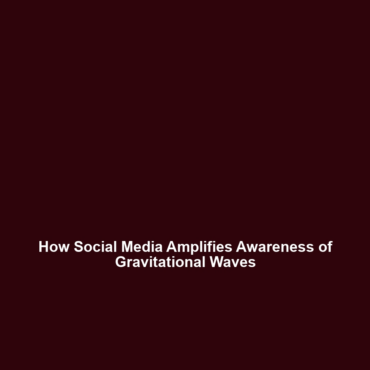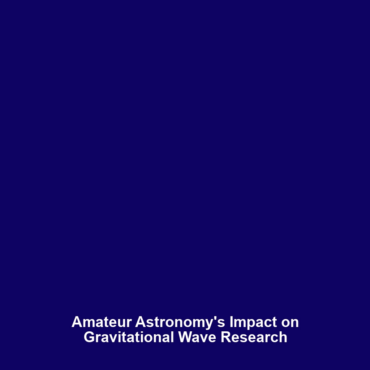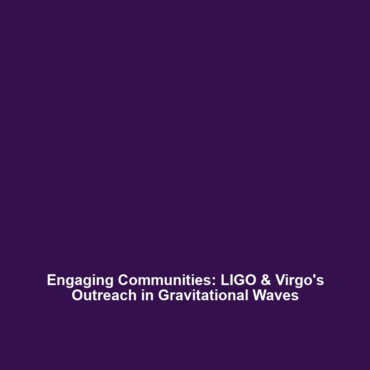The Role of Social Media and Online Platforms in Spreading Awareness of Gravitational Waves
Introduction
In recent years, the field of astrophysics has witnessed substantial advancements, particularly in the study of gravitational waves. As these ripples in spacetime, caused by cataclysmic cosmic events, gain recognition, the necessity for public understanding becomes evident. Social media and online platforms play a pivotal role in disseminating information and fostering discussions about gravitational waves, transforming complex scientific ideas into accessible content. This article delves into how digital channels enhance awareness and engagement with this revolutionary aspect of modern science.
Key Concepts
Understanding the significance of social media in the realm of gravitational waves involves several key principles:
- Information Dissemination: Social media platforms like Twitter, Facebook, and Instagram provide scientists with the tools necessary to share updates on gravitational wave research instantly.
- Community Engagement: Online forums and discussion groups foster a sense of community, enabling scientists and enthusiasts to converse about recent findings and theoretical developments.
- Science Communication: Effective communication strategies on these platforms help demystify gravitational waves, translating complex theories into relatable content for the general public.
Applications and Real-World Uses
The integration of social media in spreading awareness of gravitational waves has numerous practical applications:
- Live Event Coverage: Major announcements related to gravitational wave detections, such as those made by LIGO (Laser Interferometer Gravitational-Wave Observatory), are often shared live on social media, attracting global audiences.
- Educational Campaigns: Various organizations utilize social media to launch educational initiatives aimed at improving understanding of gravitational waves among school students and the general public.
- Collaborative Research: Online platforms facilitate collaborations between scientists across different institutions, significantly enhancing research output related to gravitational waves.
Current Challenges
While the benefits of using social media for awareness are clear, several challenges persist:
- Information Overload: The vast amount of content available on social media can lead to misinformation and confusion, making it difficult for accurate knowledge to prevail.
- Engagement vs. Clickbait: The tendency for some content to prioritize sensationalism over scientific accuracy poses a risk to public understanding of gravitational waves.
- Digital Divide: Not everyone has equal access to technology and the internet, which can hinder the widespread dissemination of gravitational wave information.
Future Research and Innovations
Looking ahead, several innovations may enhance the role of social media in spreading awareness of gravitational waves:
- Virtual Reality Experiences: New technologies that allow audiences to explore the universe through virtual reality could make gravitational waves more relatable and engaging.
- Interactive Applications: Apps that provide real-time data on gravitational wave events and interactive learning modules could significantly enhance public engagement.
- Enhanced Data Visualization: The development of sophisticated visualization tools can help convey complex gravitational wave data effectively on platforms like YouTube and Instagram.
Conclusion
In conclusion, social media and online platforms hold a transformative potential in raising awareness of gravitational waves. Through effective communication strategies and innovative applications, these digital channels can facilitate a deeper understanding of a field that was once confined to academic circles. As we advance into a future rich with technology, the call to action is clear: engage with reputable sources, participate in discussions, and contribute to the growing body of knowledge surrounding gravitational waves. For more insights, explore our other articles on science communication and astrophysics innovations.





